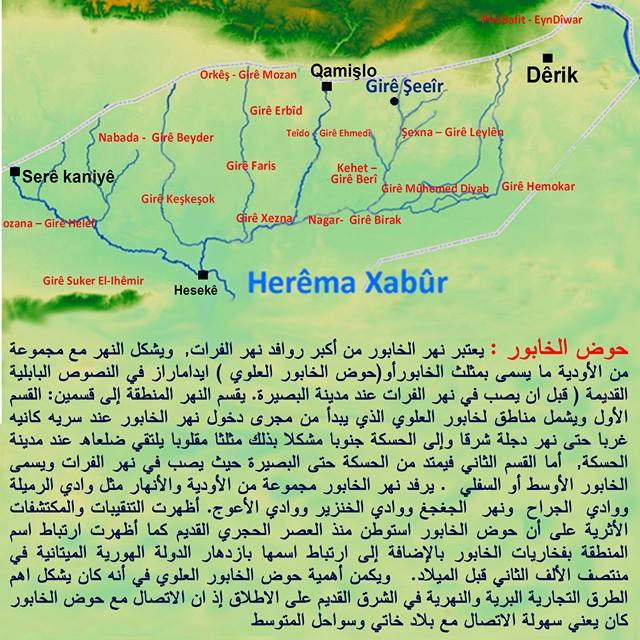
Khabour basin: The Khabour river is the biggest tributaries of the Euphrates, and it forms with a number of valleys what is called the Khabour triangle or (upper Khabour basin), Idamaraz in ancient Babylonian text.
Before it joins the Euphrates in the city of Basira, the river divides the area into two parts: the first part includes the upper Khabour region that starts with the stream entering at Seveh Kanieh in the west, all the way to Tigris river in the east, and Hassaka in the south, forming an upside down triangle, where its two sides meet in Hassaka. The second part stretches from Hassaka to Basira where it joins the Euphrates river, and it is called middle or lower Khabour.
The Khabour is joined by a number of vallies and rivers like Rmeilah valley, Jarah valley, Jakjak river, Khanzir valley and Awaj Valley. Excavations and archaeological finds showed that the Khabour basin have been inhabited since the Paleolithic. It also showed the connection of the area’s name with Khabour pottery ware, in addition to being connected to the flourishing Mittani-Hurrian state, in the middle of the second millennium B.C.
The importance of the upper Khabour basin comes from the fact that it formed the most important land and water trading route in the ancient near east, because the connection with the Khabour basin meant an easy connection with Khati land and the Mediterranean.